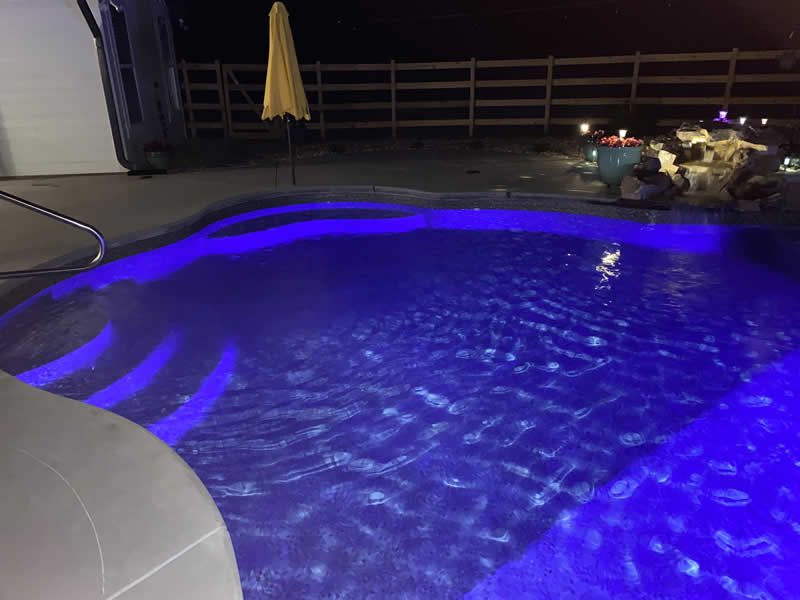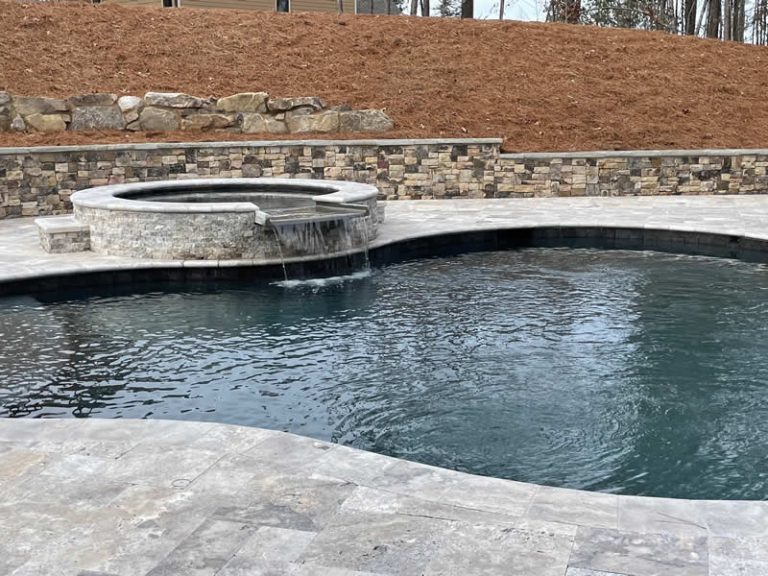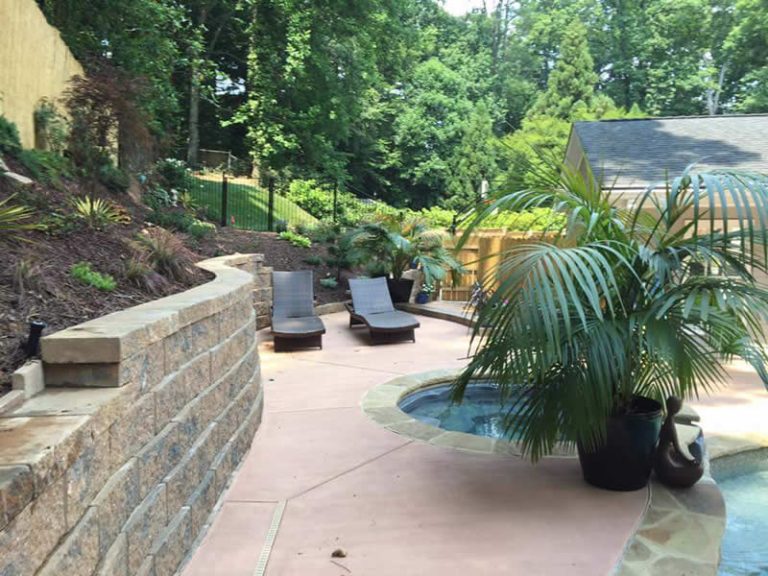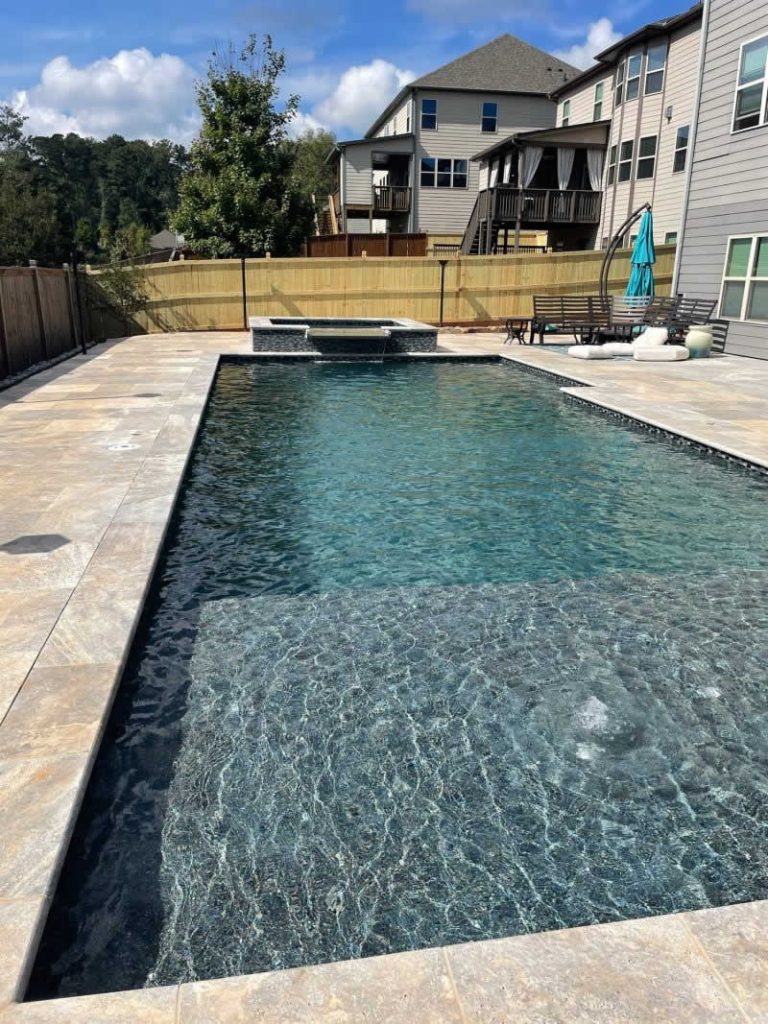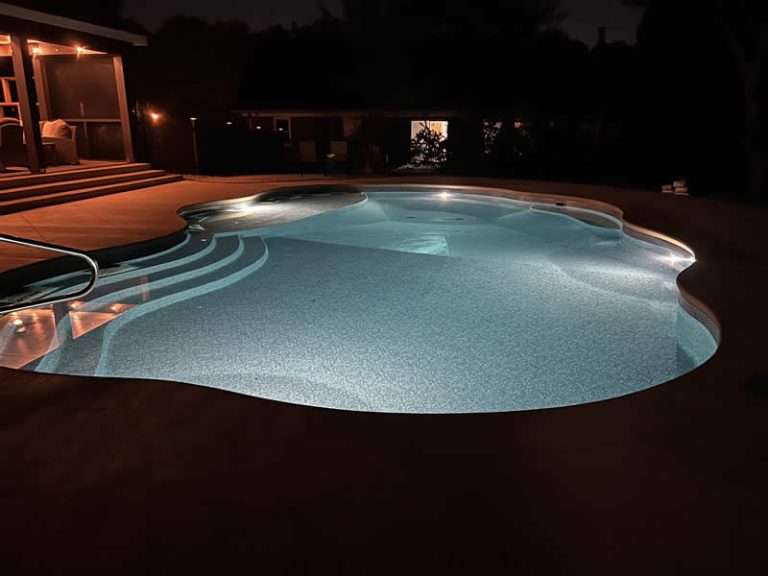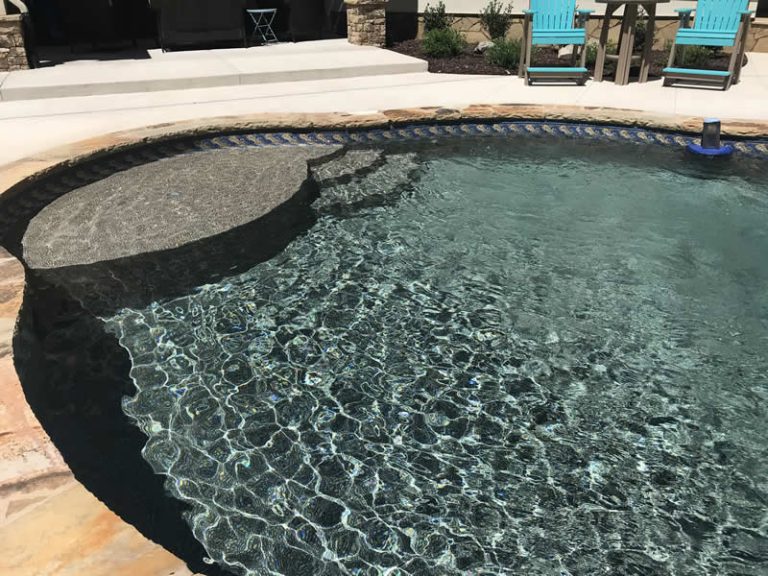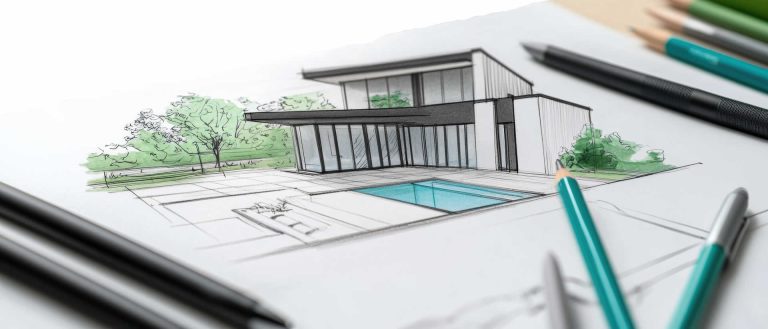Pool Depth and Size: What Really Works for Family Use
If you’ve ever watched kids cannonball into the deep end while adults float quietly at the shallow side, you already know: how deep and how big your pool is matters. It shapes how your family uses it, how much it costs, and how long you’ll love it. But what surprises most homeowners is how much overthinking happens in this stage — people often assume bigger or deeper automatically means better. That’s not always the case.
After building hundreds of pools across North Georgia, I can tell you the right dimensions aren’t about what looks impressive on paper — they’re about how your family lives.
The Myth of “Go Big or Go Home”
It’s easy to fall into the trap of thinking your pool should dominate the yard. Social media doesn’t help — you see these sprawling designs with 40-foot lap lanes, sunken fire pits, and swim-up bars. But here’s the truth: a well-planned 14×28 pool often gets more use than a 20×40 one, simply because it fits the space and lifestyle.
Bigger pools take longer to heat, use more chemicals, and require more cleaning. That doesn’t mean large pools are bad — they just need a purpose. If you’ve got a big family, host a lot of get-togethers, or want room for swimming laps, a larger footprint makes sense. But if you just want to cool off, relax, and let the kids play, you can have just as much fun in something modest and manageable.
The Goldilocks Zone for Pool Size
Most family pools fall into one of these sweet spots:
- Small to mid-size (12×24 to 16×32) — Ideal for smaller yards and families who mostly swim for fun or relaxation. Plenty of room for floating loungers and games, but compact enough to heat efficiently.
- Medium (16×36 to 18×36) — A popular balance for families with kids and guests. There’s space for both play and exercise.
- Large (20×40 and up) — Great for lap swimming, sports like volleyball, or large social gatherings.
In Georgia, where backyards range from suburban lots to open acreage, we typically design around 15×30 as the baseline. It’s big enough for fun but not overwhelming to maintain.
When deciding, think of how many people will be in it at once. If it’s mostly two adults and a few guests here and there, you’ll appreciate efficiency more than size. But if you’ve got a troop of teenagers or extended family who show up every weekend, that extra ten feet makes a big difference.
Shallow End vs. Deep End — What’s Practical
Depth is where things get interesting. Many homeowners automatically ask for an 8-foot deep end, thinking it’s a must-have. That’s a holdover from when everyone wanted a diving board. These days, diving boards are less common — partly for safety, partly for insurance — and most families find they rarely use that extra depth.
A 5 to 6½-foot deep end is the new norm. It’s deep enough for swimming and light jumping but shallow enough that adults can still stand comfortably. That range also keeps more of the pool usable for games and conversation. For reference:
- 3½ feet: Ideal shallow end depth for kids and adults to stand comfortably.
- 4–5 feet: Great for water games, basketball, and exercise.
- 6–6½ feet: Deep enough for swimming, flips, or controlled diving.
- 8 feet: Only necessary if you truly plan on installing a diving board.
Many builders (us included) now recommend a “sport pool” layout — shallow at both ends with a deeper section in the middle. It’s perfect for volleyball, kids’ play, and overall balance. It also keeps adults closer together rather than everyone congregating at one end.
Matching Depth to Use
Depth affects more than recreation — it also impacts water volume, temperature, and cost. Deeper pools take longer to heat and cool, and they require more chemicals to balance properly. Shallower pools are more responsive to temperature changes and tend to stay warmer through Georgia’s shoulder seasons.
If you’re planning tanning ledges or built-in benches, shallower sections make them more functional. You can integrate lounge chairs, bubblers, and small waterfalls without losing swimming space. The key is to think of your pool like a living space — each area has a purpose.
For example:
- Shallow end = kids’ zone, water loungers, in-pool seating
- Mid-depth = social area and water games
- Deep end = swimming, floating, or diving practice
When each zone is designed intentionally, your pool feels bigger and more usable, even if it’s technically smaller.
How Terrain and Materials Influence Size
In Georgia, we deal with rolling terrain and a lot of red clay. That affects both depth and design. A steep lot might make it difficult to go too deep without expensive retaining work. Fiberglass pool models also come with preset depths — usually around 4 to 6½ feet — while gunite gives you complete freedom but at higher excavation and material costs.
Vinyl liner pools offer flexibility too, though going beyond 8 feet means extra wall bracing and reinforcement. If you’re building on a slope, we can use that to our advantage by stepping the deck down or adding a spa level without adding unnecessary depth.
Bottom line: your backyard itself often tells us what’s possible before we ever dig a hole.
Don’t Forget Comfort and Safety
When you’re thinking depth, also think safety and comfort. Small children and older adults benefit from gradual slopes and wide entry steps. Consider adding a tanning ledge or bench shelf — it doubles as a shallow play area and a perfect spot to relax with a drink in hand.
Good lighting and contrasting tile markers on depth transitions also go a long way in preventing slips or surprises. They’re small details that make a big difference in usability.
The Sweet Spot for Most Families
If you’re looking for a solid starting point, here’s what tends to work best for most Georgia families:
- Size: 15×30 or 16×32
- Depth: 3½ feet in the shallow end, 6 feet in the deep
- Shape: Rectangular or modified freeform with built-in ledge or step bench
That setup gives you room for floating, games, and swimming without wasting space or budget. It heats easily, cleans efficiently, and feels right-sized whether two people or ten are in it.
The right depth and size make your pool feel natural — not like it’s trying too hard. You’ll find that when it fits your lifestyle, it invites use day after day instead of becoming a backdrop. And that’s what every pool should be: part of your daily life, not just a photo opportunity.
Let’s Talk …
Let us take care of your Pool & landscape
At Aqua Fun, we don’t just build pools — we build relationships that last for seasons to come. Our team takes the time to understand your space, your needs, and how you actually use your backyard. Then we craft solutions that make every swim, soak, or gathering more enjoyable. It’s not about selling you more; it’s about helping you get it right.
If you’ve been thinking about improving, repairing, or re-imagining your pool, let’s talk. We’ll meet you where you are, explain your options clearly, and make sure the whole process feels simple and stress-free. That’s the Aqua Fun way — real people, real care, and results that speak for themselves.
Mon – Fri
8:00 – 6:00

